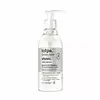What's inside
What's inside
 Key Ingredients
Key Ingredients

 Benefits
Benefits

 Concerns
Concerns

 Ingredients Side-by-side
Ingredients Side-by-side

Water
Skin ConditioningGlycerin
HumectantPolysorbate 20
EmulsifyingPropylene Glycol
HumectantAcrylates/C10-30 Alkyl Acrylate Crosspolymer
Emulsion StabilisingBifida Ferment Lysate
Skin ConditioningPeat Extract
Skin ConditioningHydroxyethyl Urea
HumectantSodium Hyaluronate
HumectantDisodium Cocoamphodiacetate
CleansingSodium Hydroxide
BufferingDisodium EDTA
Parfum
MaskingLactic Acid
BufferingAcetic Acid
BufferingMethylpropanediol
SolventEthylhexylglycerin
Skin ConditioningPhenoxyethanol
PreservativeCaprylyl Glycol
EmollientSodium Benzoate
MaskingBenzoic Acid
MaskingWater, Glycerin, Polysorbate 20, Propylene Glycol, Acrylates/C10-30 Alkyl Acrylate Crosspolymer, Bifida Ferment Lysate, Peat Extract, Hydroxyethyl Urea, Sodium Hyaluronate, Disodium Cocoamphodiacetate, Sodium Hydroxide, Disodium EDTA, Parfum, Lactic Acid, Acetic Acid, Methylpropanediol, Ethylhexylglycerin, Phenoxyethanol, Caprylyl Glycol, Sodium Benzoate, Benzoic Acid
Water
Skin ConditioningStearyl Behenate
EmollientSodium C14-16 Olefin Sulfonate
CleansingJojoba Esters
EmollientDisodium Cocoamphodiacetate
CleansingAcrylates/C10-30 Alkyl Acrylate Crosspolymer
Emulsion StabilisingEthylhexylglycerin
Skin ConditioningHydroxypropyl Methylcellulose
Emulsion StabilisingLactic Acid
BufferingLavandula Angustifolia Oil
MaskingMentha Arvensis Leaf Oil
MaskingMentha Piperita Oil
MaskingMenthoxypropanediol
MaskingPanthenol
Skin ConditioningPhenoxyethanol
PreservativePhytic Acid
Sodium Hydroxide
BufferingDisodium EDTA
CI 77400
Cosmetic ColorantWater, Stearyl Behenate, Sodium C14-16 Olefin Sulfonate, Jojoba Esters, Disodium Cocoamphodiacetate, Acrylates/C10-30 Alkyl Acrylate Crosspolymer, Ethylhexylglycerin, Hydroxypropyl Methylcellulose, Lactic Acid, Lavandula Angustifolia Oil, Mentha Arvensis Leaf Oil, Mentha Piperita Oil, Menthoxypropanediol, Panthenol, Phenoxyethanol, Phytic Acid, Sodium Hydroxide, Disodium EDTA, CI 77400
Ingredients Explained
These ingredients are found in both products.
Ingredients higher up in an ingredient list are typically present in a larger amount.
Acrylates/C10-30 Alkyl Acrylate Crosspolymer is a synthetic polymer. It is used to thicken and improve the texture of products. Due to its properties, it can prevent water and oil ingredients from separating.
Disodium Cocoamphodiacetate is a surfactant and helps cleanse skin. It is created from the fatty acids of coconut oil.
Surfactants help rinse oil, dirt, and other pollutants easily from skin. It has a faint fruit-like scent.
Disodium EDTA plays a role in making products more stable by aiding other preservatives.
It is a chelating agent, meaning it neutralizes metal ions that may be found in a product.
Disodium EDTA is a salt of edetic acid and is found to be safe in cosmetic ingredients.
Learn more about Disodium EDTAEthylhexylglycerin (we can't pronounce this either) is commonly used as a preservative and skin softener. It is derived from glyceryl.
You might see Ethylhexylglycerin often paired with other preservatives such as phenoxyethanol. Ethylhexylglycerin has been found to increase the effectiveness of these other preservatives.
Lactic Acid is another well-loved alpha hydroxy acid (AHA). It is gentler than glycolic acid but still highly effective.
Its main role is to exfoliate the surface of the skin by loosening the “glue” that holds dead skin cells together. Shedding those old cells leads to smoother, softer, and more even-toned skin.
Because lactic acid molecules are larger than glycolic acid, they don’t penetrate as deeply. This means they’re less likely to sting or irritate, making it a great choice for beginners or those with sensitive skin.
Like glycolic acid, it can:
Lactic acid also acts as a humectant (like hyaluronic acid). It can draw water into the skin to improve hydration and also plays a role in the skin's natural moisturizing factor (NMF) in the form of sodium lactate.
Studies show it can boost ceramide production to strengthen the skin barrier and even help balance the skin’s microbiome.
To get results, choose products with a pH between 3-4.
Lower strengths (5-12%) focus on surface exfoliation; higher strengths (12% and up) can reach deeper in the dermis (deeper, supportive layer) to improve skin texture and firmness over time.
Though it was originally derived from milk, most modern lactic acid used in skincare is vegan. It is made through non-dairy fermentation to create a bio-identical and stable form suitable for all formulations.
When lactic acid shows up near the end of an ingredient list, it usually means the brand added just a tiny amount to adjust the product’s pH.
Legend has it that Cleopatra used to bathe in sour milk to help reduce wrinkles.
Lactic acid is truly a gentle multitasker: it exfoliates, hydrates, strengthens, and brightens. It's a great ingredient for giving your skin a smooth, glowing, and healthy look without the harshness of stronger acids.
Read more about some other popular AHA's here:
Learn more about Lactic AcidPhenoxyethanol is a preservative that has germicide, antimicrobial, and aromatic properties. Studies show that phenoxyethanol can prevent microbial growth. By itself, it has a scent that is similar to that of a rose.
It's often used in formulations along with Caprylyl Glycol to preserve the shelf life of products.
Sodium Hydroxide is also known as lye or caustic soda. It is used to adjust the pH of products; many ingredients require a specific pH to be effective.
In small amounts, sodium hydroxide is considered safe to use. However, large amounts may cause chemical burns due to its high alkaline.
Your skin has a natural pH and acid mantle. This acid mantle helps prevent harmful bacteria from breaking through. The acid mantle also helps keep your skin hydrated.
"Alkaline" refers to a high pH level. A low pH level would be considered acidic.
Learn more about Sodium HydroxideWater. It's the most common cosmetic ingredient of all. You'll usually see it at the top of ingredient lists, meaning that it makes up the largest part of the product.
So why is it so popular? Water most often acts as a solvent - this means that it helps dissolve other ingredients into the formulation.
You'll also recognize water as that liquid we all need to stay alive. If you see this, drink a glass of water. Stay hydrated!
Learn more about Water